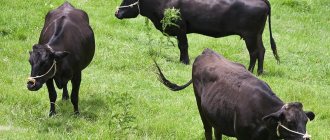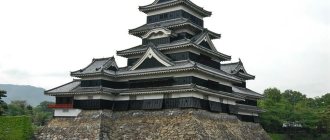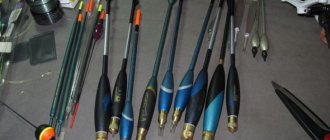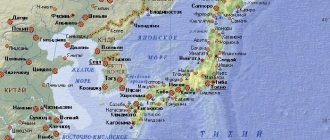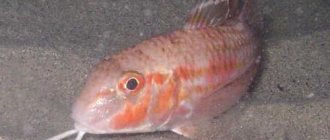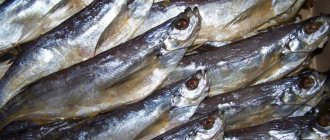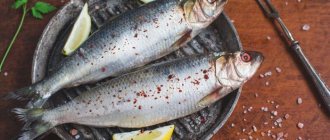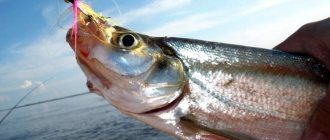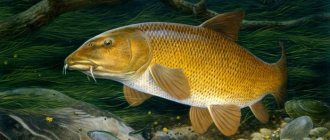Some information about meat
Since the 7th century, the Japanese were prohibited from eating meat. The permit was introduced only in the middle of the 19th century. Due to the fact that cattle were isolated and isolated for a long time, natural selection was carried out. As a result, animals that had a high content of intramuscular fat became dominant.
In 1910, the concept of “wagyu” appeared, which meant “Japanese cow.” In turn, they are divided into four species: short-horned, hornless, brown, black. The last type of animal is most common in Japan. It was created by crossing Wagyu with European breeds. They are the ones who produce marbled meat. There are other types of cattle whose product also has this shade. But the meat discussed in the article is considered standard. Kobe beef, the photo of which is presented below, differs in color from the usual product.
One of the best places for the production of Japanese marbled Kobe beef is considered to be the city of the same name in Hyogo Prefecture. The Europeans who tried this type of product called it that.
Nowadays, the term "Kobe beef" refers to the marbled type of meat not only in Japan, but also in the United States.
Unlike European cows, Wagyu are kept in stalls to accumulate fat mass.
Growing technology
Due to the conditions of keeping the animal and the peculiarities of fattening technologies, inclusions of intramuscular fat are distributed throughout the meat so that a special pattern of meat is obtained, reminiscent of marble. As a result, the meat acquires an exceptionally tender texture. Clean meadows, fresh air and a special diet are only a visible part of the technology for raising “marble gobies”. According to different versions, the special program also includes vibration massage, beer, sake and listening to classical music. How the cultivation actually occurs is a production secret. What is known for certain is that the bull must be castrated or be a virgin, no stimulants are used to raise the animal, the bull leads a sedentary lifestyle and is isolated from stressors.
How is cattle raised?
Proper nutrition for Wagyu is natural food and the absence of artificial additives. Their diet includes corn and barley. They are the ones that have the property of imparting that same white color to the product.
Diet is considered one of the main criteria for obtaining Kobe beef. This type of meat is formed only with a uniform increase in the weight of the animal. Marbling also depends on the age of the cattle. To obtain Kobe beef, calves that are not yet thirty months old are not slaughtered. Because calves initially produce only subcutaneous fat, and then intramuscular fat.
Marbled Kobe beef has gained worldwide fame. But, unfortunately, it is difficult to bring it out of Japan, since the residents are quite “greedy” with their products. For this reason, this type of meat is now bred in the USA. The product can also be found in Australia and New Zealand.
But the residents of these countries have different opinions on how to raise cattle.
The Japanese believe that wagyu should be raised only in closed stalls, while the Americans believe that the best product is obtained when kept on pasture.
The latter representatives marbleize meat and other breeds of animals.
History and features of the production of the delicacy
In the 17th century, the ban on eating the meat of pack animals was lifted in Japan. Over several centuries, a pure breed of cows was formed within a closed country. “Wagyu” or “wagya” is translated from Japanese as “Japanese cow.”
Direct breeding of livestock for marbled meat began at the beginning of the 20th century on Sedoshima, the second largest island in the Inland Sea of Japan. It all started due to a change in the diet of livestock, to which olive waste left over from oil production began to be added. After the “interesting” pattern of beef was noticed and appreciated, systematic selection of the breed began.
Currently, marbled meat is produced by combining the right breed and certain methods of raising cows. For the first six months of their lives, calves are fed selected milk and grazed in meadows. After this, older animals are placed in isolated rooms, suspended on belts to limit muscle activity. A sedentary lifestyle contributes to an even distribution of fat layers in meat.
The diet of cows during fattening consists of rice straw, Italian rye, pressed olive pulp and, in addition to water, small portions of beer or sake. In addition, they regularly receive manual or vibration massages and sometimes play classical music.
Description of Kobe beef
Marbled meat has about 120 varieties. Each of them is named after the village in which it is produced. By the way, it is called that because when cut it looks like a stone mottled with veins. This effect is achieved due to the presence of thin layers of fat in muscle tissue. They give the beef its amazing lightness and juiciness. The source of the marbled product is the meat of young bulls. This results in a low connective tissue content in beef, which contributes to the taste quality of tenderness. As mentioned above, they are grown using special technology. There is even a saying about kobe that says that this meat does not require teeth.
Typically, a Japanese chef will cook Kobe beef on a large stove in front of diners. The meat is fried in vegetable oil with the addition of spices and sesame seeds.
You can also find a dish called sukiyaki nabe in restaurants. It is served with bean curd, raw egg, vegetables and noodles. The cook himself only prepares the ingredients, and the guests cook thin slices of meat in a pan with weak broth.
The most important criterion for Kobe beef is its marbling. In another way, it can be called the quality of the intermuscular fat layer. Let's look at this in more detail below.
Ribeye steak at home
The ribeye steak is the fattest, and therefore juiciest and richest type of marbled meat.
To prepare such a steak, you only need the meat itself, salt and pepper to taste.
As mentioned above, the meat should lie down for a while, that is, it should be saturated with oxygen and warm to room temperature.
Future steaks should be cut into portions with a thickness of at least 2.5 centimeters and no more than 4 cm, since very thin pieces will lose moisture and be dry, and thick pieces will not be cooked well.
To begin with, the steaks are dried with a towel on all sides and rubbed with spices and salt.
The frying pan is heated and pieces of meat are laid out, trying not to touch them together. Fry each side of the steak for exactly one and a half minutes. The meat is fried twice on each side.
After this, the finished pieces of meat are laid out and wrapped in foil to “rest” for about 5-10 minutes.
Ready ribeye steaks are served on a warm plate or platter with your favorite side dishes and sauces.
These recipes are incredibly easy and simple to prepare even at home and can be done by any housewife. In addition to the classic preparation of Kobe beef in the form of steaks, there are also various recipes for serving the meat in marinated and salted form.
What are the product categories?
In this section you can get acquainted with Kobe beef and a description of each type of meat. Thus, this type of product is divided into five categories, and according to the properties of the cut - into classes A, B, C.
Light pink meat, which is permeated with thin layers of fat, is considered one of the best. Here we are talking about the fifth category. This type of product is sold for a large amount of money at auctions. As a rule, they are bought by owners of Tokyo and Kyoto restaurants.
The most common are the fourth and third categories of meat. They are slightly darker and less marbled. But their taste is excellent. This Kobe beef has a mild and aromatic flavor.
Foreign buyers are not so interested in the first and second categories of this product. Because it's not much different from just good meat.
Meat classification and evaluation criteria
Japan's annual beef production is 352,000 tons (primary meat, 2014), of which wagyu accounts for 164,000 tons, with the rest coming from dairy cows and hybrids.
The categories of Japanese-produced wagyu are determined by the Japan Meat Grading Association (JMGA).
There are 2 systems used to determine the Wagyu class. The first evaluates the amount of meat at the exit and is divided into 3 categories (A, B and C) in descending order, the second assigns the meat one of 5 classes depending on quality. 1) Output volume
The product is assigned class “A” if the proportion of meat (pulp) removed from skin, bones and entrails exceeds the standard indicator, class B – if it meets the standard, and class C – if it lags behind the norm.
In other words, with the same initial weight, a higher class is assigned to meat that produces more pulp. 2) Quality
The quality of meat is assessed according to 4 criteria: 1) marbling (shimofuri), 2) color, 3) elasticity and texture, 4) color and quality of fat, a five-point system is used for assessment: 5 (excellent), 4 (good), 3 (standard), 2 (close to standard), 1 (below standard). The class of meat is determined based on a comprehensive assessment of all criteria, with the greatest attention paid to the level of marbling. This results in red meat without fat receiving a lower score.
It should be noted that the number of points for these two rating systems is of most interest to product suppliers and has nothing to do with consumer requirements for the taste of meat. The taste of meat is determined taking into account aroma, umami (“fifth taste”), texture, and also depends on the cooking method and individual preferences of a particular consumer. Some professionals have noted that recently the flavor of Wagyu has been losing its intensity due to an excessive desire for high levels of marbling.
How are the letter designations at the cut site deciphered?
Thus, class A includes the softest pieces of the front part of the thick edge. That is, this type is considered the best.
Class B includes pieces of thick and thin edges from the middle of the carcass. They are used for steaks.
Class C product is the toughest. This includes the back of the thin edge. This type of product is usually used in the preparation of tartare and carpaccio.
In the US, the beef quality scale is based on regular meat. The marble appearance of the product exceeds the Prime class standards. For this reason, farmers came up with their own scale, which depends on the marbling of the meat. Thus, it is customary to distinguish between silver (about 13%), black (20%) and gold (highest, more than 23%) categories of Kobe beef.
Marbled beef in cooking
Steak picanha. how to cook in a frying pan, what it is, degrees of doneness, Miratorg, marbled beef
Residents of America believe that Kobe beef is beyond competition and is best suited for cooking steaks, as they come out especially juicy and soft.
Recipes and methods for preparing dishes vary depending on the thickness of the meat (there are 4 types).
The degree of doneness of such meat is usually classified into 6 categories: raw, rare, medium-raw, medium-rare, almost done, fully done.
Ideal dishes made from marbled beef are steaks prepared according to classic recipes: striploin, rib-eye, club steak.
It should be noted that beef is considered practically the only meat that can be eaten raw. Raw beef contains beneficial enzymes, which lose their properties when cooked.
Kobe meat cooks very quickly. An important nuance is not to overdry it. Grilled vegetables will be a good side dish for this dish.
What can you cook?
The Japanese cook this type of product. The most popular dish made from this type of meat is sukiyaki. This is beef that is cut into thin slices. It is quickly cooked in boiling broth. The dish is served with mushrooms, vegetables and sauce.
Sometimes the Japanese serve Kobe beef as sashimi, that is, raw. They fry this product very rarely.
In turn, Americans cut beef into steaks. They fry them on coals or in a frying pan. This type of dish became popular after information about the product. It stated that marbled meat contains more omega-6 and omega-3 fatty acids, unlike plain beef. As you know, they are very beneficial for the human body.
Farmers in Russia marbleize Herefords. It is worth noting that the latter are not in first place in the production of Kobe beef. But you can buy this type of meat, since Herefords are considered one of the best breeds. It can also be used to make excellent steaks.
Kobe meat value
This beef is extremely rich in proteins and fats, but at the same time contains virtually no carbohydrates.
Due to its low calorie content, about 170 kcal per 100 g, meat is considered a dietary product. The juiciness of the meat comes from moderate amounts of fat – about 10 grams. The amount of cholesterol in meat is small.
The main part of intermuscular fat is made up of unsaturated fatty acids, including Omega-3 and Omega-6.
Beef protein is quite complete: it contains all the necessary amino acids, vitamins and minerals.
Kobe meat is useful for consumption by people who suffer from diseases of the nervous and cardiovascular systems, with anemia, during the rehabilitation period, pregnant women and children.
An important nuance: in order to get maximum benefits for the whole body, you need to choose meat very carefully. It must be fresh and of the highest quality.
Where can I try this product?
You can’t just buy Kobe beef in stores. As you remember, it is an elite product. In Japan, one kilogram of marbled meat costs about $160.
If you want to try this type of product, you should choose the place where Australian-made beef is presented. It is also best to find out the pedigree of the meat in advance, since the price category varies greatly.
If you still want to try authentic Kobe beef, then this can only be done in Japan itself. Therefore, if you ever visit this country, do not forget to feast on marbled meat.
Rich portfolio of brands
In addition to the two rating systems, there are standards created by the producers themselves, which focus on the breed, place of production and quality of meat. The purpose of such standards is to improve the level of local brands and attract consumer attention. After all, it is consumer trust and the high level of the brand that become the key to not only maintaining, but also increasing the price level for products. These days, there are about 300 small and large brands of wagyu in Japan. At the inaccessible peak are the meats of Kobe (Hyogo Prefecture), Matsuzaka (Mie Prefecture), Omi (Shiga Prefecture) and Yonezawa (Yamagata Prefecture). Sendai is the only brand of A5 grade wagyu, and A4 and A3 grade meat obtained from the same producer is given the name Sendai kuroge wagyu.
Wagyu breeds
Wagyu includes four breeds of cows ( Bos taurus taurus
): Japanese black (Japanese 黒毛和種
kuroge washu
), Japanese brown (Japanese 赤毛和種
akage washu or akaushi
, also “Japanese red”), Japanese hornless (Japanese 無角和種
mukaku washu
) and Japanese shorthorn ( Japanese: 日本短角和種
nihon tankaku washu
). The breeds are distinguished into varieties characteristic of traditional breeding regions. Meat is often named according to its place of origin.
The total number of beef cattle in Japan is estimated at 2.8 million heads, of which, according to 2007 data, 1.74 million heads were of the Japanese breed - Wagyu. Of the Wagyu population, 96% are Japanese Black cows, with the smallest share (less than 1%) being Japanese Shorthorns.
Japanese cow breeds were developed in the last third of the 19th century (after the Meiji Restoration in 1868) by crossing native Japanese cows with imported popular European and American breeds. In 1910, a register of pedigree cattle was opened. From this point on, crossbreeding was no longer allowed, and the breeds developed in purity. In 2008, there were 522,000 Wagyu calves registered in the Wagyu Register, each of which received a document of origin with a nose print, whose pattern is as individual as fingerprints.
Black Japanese bull
Japanese black
The breed was developed by crossing an indigenous Japanese cow with Shorthorns, Brown Swiss and Devons with the infusion of blood from Simmental and Ayrshire cows. The Kagoshima variety contains Holstein blood. Other varieties are Mishima, Tsuru, Tajima, Tottori, Shimane, Okayama. Cows have black fur with brown tips.
Japanese blacks account for 90% of all marbled beef production in Japan. The meat of these cows has a fine marbled structure, rich taste, it is juicy and very tender.
Japanese brown
It has a light red-brown color. The breed was developed by crossing an aboriginal cow with a Simmental and a Korean cow, with the addition of Devon blood. Well-known varieties are the Koshi and Kumamoto, which were formed to a greater extent under the influence of the Korean or Simmental breeds, respectively. They rank second in popularity in Japan. Their meat is moderately marbled, has a lighter taste and contains less fat, so it is more preferable for a healthy diet.
Japanese Shorthorn
The breed was developed in the Tohoku region from an indigenous cow whose ancestor was the Nambu cow, which was used as a pack animal during the Edo period. The Aboriginal cow was crossed with dairy and beef Shorthorns with an infusion of Ayrshire and Devon blood. The Japanese Shorthorn is bred on the islands of Honshu and Hokkaido and is not found outside the Japanese islands. Japanese Shorthorns are raised on open grazing and are distinguished by their luxurious dark red color, with red and white and roan specimens also available. Their meat is lean, but has a rich taste due to the high content of inosinic and glutamic acids.
Japanese hornless
The Japanese hornless breed is considered the ideal representative of Wagyu. The breed was developed in Yamaguchi Prefecture by crossing native cows with Aberdeen Angus cows and then crossing them with Japanese black bulls. These cows are smaller in size than others, have a thick layer of subcutaneous fat and lean meat with a large amount of amino acids that enhance flavor.
Wagyu beef production outside Japan
Marbled Wagyu beef is produced on farms in Australia, the Americas and Europe. The high price and constant demand for Wagyu meat compensate for the high costs and difficulties of the technology. Not all marbled meat, called "Wagyu" in the market, actually comes from purebred animals.
Purchasing purebred breeding animals in Japan is not economically profitable. Typically, farmers purchase embryos that are implanted into a surrogate mother—a cow of any breed. The offspring will be purebred, but the embryo can cost more than £400 and there is no guarantee that it will eventually grow into a healthy, high-quality animal. It is easier and much cheaper to purchase sperm from breeding bulls, which is used to fertilize cows of local breeds. Some farms purchase or raise one or two Wagyu breeding bulls for their local breed herds. As a result, most wagyu outside of Japan are actually half-breeds, and their meat differs from the authentic one.
For purebred or mixed breeding abroad, Japanese black and Japanese brown breeds are used. The Japanese Shorthorn and the Japanese Hornless are bred exclusively in Japan.
Unique properties of Wagyu
Among the special properties of beef are the following:
- High content of oleic acids (Omega-3, Omega-6) and other monounsaturated fats. The level in meat reaches 62% - more than in any other form.
- Natural aroma, smooth fiber structure and juicy taste. Wagyu does not “dry out” when frying or baking and is easy to process.
- The substances contained in meat have anti-carcinogenic properties and prevent the formation of cholesterol.
Also among the properties of wagyu can be considered rarity and cost, indecent by ordinary standards. There are just over 2,000,000 Wagyu cows in the world, of which 75% are bred in Japan, which exports the delicacy throughout the world. In other countries (Australia, USA, Germany), production cannot even meet the demand in their own market.
In Russia, a steak (300-400 grams) of marbled Wagyu beef can be purchased for an average of 20,000 rubles. And the highest quality product from Japanese Kobe cows costs many times more.
The high price is due to limited production and the high cost of meat. The cows are not just grazed in the meadows, but are fed the best milk and feed, and before slaughter they spend 6-7 months motionless so that the meat remains tender and streaked with fat.
Doesn't protect in two ways: valves make masks useless against the virus
The studio is preparing a new film about Superman: Henry Cavill may still return to the role
A child organized a dinner and dance for his nanny, whose graduation was canceled
